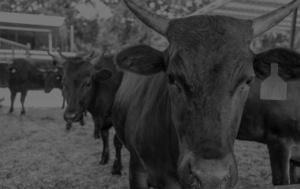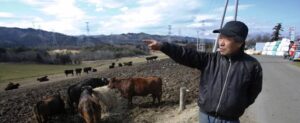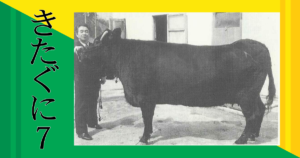How Is Wagyu Beef Graded?
Table of Contents
Are you curious about how Wagyu beef is graded? Understanding the grading system can give you insights into the quality of the meat you’re consuming. Let’s dive into the nuances of Wagyu grading, which varies depending on the country and the overseeing organization.
Wagyu beef is considered the pinnacle of gourmet meats due to its exceptional quality and unique taste. Beyond its delicious flavor, Wagyu is mysterious due to the exact grading procedure that determines its value. By delving into the purpose of grading, the established standards, and the imperative of maintaining uniformity, we aim to shed light on the essence of Wagyu beef grading. At its core, this system is guided by meticulous organizations.
The core of Wagyu beef grading is a thorough set of quality criteria developed by recognized organizations like the Japan Meat Grading Association. These specifications address various factors, including the amount of marbling, the flesh’s color and texture, and the fat’s quality. Each component is carefully evaluated to establish the overall grade of Wagyu beef, which ranges from the highest-quality A5 to the affordable B3. Wagyu farmers uphold a legacy of excellence by adhering to stringent standards, ensuring that every cut of Wagyu beef meets the exacting standards of connoisseurs. The national unified transaction standard for Japanese beef is based on a standard developed by the Japan Meat Grading Association and authorized by the Director-General of the Agricultural Production Bureau of the Ministry of Agriculture, Forestry, and Fisheries (MAFF). This guideline ensures consistent quality for beef of the same grade throughout the nation. This standard is applicable to all cattle breeds and is not exclusive to Wagyu. The surface of the 6th and 7th rib cross sections is the main factor used for carcass grading (Fig. 1).

Fig. 1. The 6th/7th rib cross section
Quality Standards and Grading in Japan
In Japan, Wagyu beef is graded meticulously based on two key factors: marbling and yield.
Marbling, or the intricate patterns of fat within the meat, is a crucial indicator of quality. The Japanese beef grading system assigns a marbling grade ranging from 1 to 5. This grading system reflects the Beef Marbling Standard (BMS) score, which spans from 1 to 12. Higher BMS scores correspond to richer marbling and superior flavor.This marbling grade is determined by the Beef Marbling Standard (BMS) score, which ranges from 1 to 12. The final grade is based on the BMS score, as follows:
- Grade 1 = Poor (quality score of 1)
- Grade 2 = Below Average (Quality Score of 2)
- Grade 3 = Average (a quality score of 3 or 4)
- Grade 4 = Good (quality score of 5 to 7)
- Grade 5 = Excellent (quality score of 8 to 12)

As the marbling and fat content increase, the grade number goes up. Additionally, the yield grade, denoted by letters A to C, evaluates the cutability of the meat. A higher yield grade signifies a greater proportion of high-quality meat. For example, Japanese A5 Wagyu, the highest grade, boasts both exceptional marbling and a high yield percentage, making it highly sought after by beef connoisseurs.

Yield Grade is the ratio of meat to dressed carcass weight, and is classified into three grades, from A (above average yield of total cuts) to C (below average yield), according to measurements in the following four categories: thoracic longissimus muscle area; rib thickness; cold split carcass weight; and subcutaneous fat thickness (Japan Meat Grading Association, 2014). Quality Grade is categorized from 5 to 1 (larger values indicate higher quality), according to marbling, meat color and brightness, meat firmness and texture, and fat color, luster, and quality. Marbling is evaluated by according to a Beef Marbling Standard (BMS), which ranges from 1 to 12 (larger values indicate more abundant marbling).
How is Yield Grade Calculated
Suppose we have a Wagyu carcass with the following measurements:
- Thoracic longissimus muscle area: 90 square centimeters
- Rib thickness: 3.5 centimeters
- Cold-split carcass weight: 220 kilograms
- Subcutaneous fat thickness: 2.5 centimeters
- Using the provided equation for yield estimation
Formula: 67.37 + (0.130 x Thoracic longissimus muscle area) + (0.667 x Rib thickness) – (0.025 x Cold-split carcass weight) – (0.896 x Sucutaneous fat thickness)
Estimated Yield Percentage = 67.37 + (0.130 x 90) + (0.667 x 3.5) – (0.025 x 220) – (0.896 x 2.5)
Estimated Yield Percentage: ≈ 74.965%
Based on this estimated yield percentage, which is significantly above average, this Wagyu carcass would likely be classified as Yield Grade A.
Quality grading difference between Japan and the United States
Assuming this Wagyu carcass has exceptional characteristics
- Marbling (BMS): The meat has a BMS score of 12, indicating abundant marbling.
- Meat color and brightness: The meat exhibits a rich, vibrant red color, scoring 5 out of 5.
- Meat firmness and texture: The meat is extremely tender with a fine, velvety texture, scoring 5 out of 5.
- Fat color, luster, and quality: The fat showcases an exquisite color and luster, scoring 5 out of 5.
With these outstanding assessments, the quality grade for this A5 Wagyu carcass would be at the highest level, likely a Grade 5 or even beyond, representing exceptional quality and flavor.
In the United States, Wagyu beef is graded by the USDA using a different system focusing on three categories: Select, Choice, and Prime. Wagyu beef typically falls into the Prime category, characterized by abundant marbling, optimal coloring, and low carcass maturity. For instance, Grade 12 Kobe beef from Japan would be considered a Prime designation in the USDA grading system.
However, it’s essential to note that while both Japan and the US have grading systems, they are not directly equivalent. A USDA Prime steak doesn’t equate to a Japanese A5 Wagyu because of the differences in grading criteria and nuances between the systems.
Currently, there is no official Wagyu grading system established in the US. Nevertheless, efforts are underway to establish one in the near future, providing consumers with clearer information about the quality of Wagyu beef available on the American market.
what makes a carcass of lower quality?
Carcasses with lower yield and marbling grades are generally classified as poorer quality in Japan.
For example, carcasses with a marbling grade of 1 or 2, which indicates less marbling and less desired flavor and texture, are regarded as mediocre to below average in quality in Japan. Reduced marbling is one of the traits of lower-quality Wagyu carcasses that can impact the meat’s overall flavor, softness, and juiciness.
Additionally, they can have lower yield ratings, which would suggest fewer appetizing cuts and possibly worse-quality meat. In addition to marbling, several other factors contribute to the grading of Wagyu beef carcasses, especially when considering lower grades. Meat color and texture play crucial roles, with lower-grade carcasses often exhibiting inconsistencies such as paleness or an uneven distribution of fat.
Fat quality within the meat also influences grading, with lower-grade carcasses characterized by less desirable attributes such as excessive yellowness or uneven distribution. Moreover, muscle firmness is considered, as lower-grade carcasses may lack the desired level of tenderness and juiciness associated with high-quality Wagyu beef. These lower grades frequently result from lifelong feeding patterns, food, and heredity. Variations in age, handling, and processing can also influence the ultimate grade of Wagyu beef.
In and Outs of Wagyu Beef Marbling
What is Intramuscular Fat (IMF)?
In Japanese Black Beef MeansWhen it comes to Wagyu beef, especially Japanese black, intramuscular fat (IMF) is one of the most important factors that determines its total quality. It refers to the complex patterning of fat inside the muscle fibers that makes the meat juicy, soft, and flavorful. Japanese black beef, which is famous for having a lot of marbling, is the best Wagyu, and its IMF level is a big part of why it’s considered special. There have been clear past trends in the amount of IMF in Japanese black beef over time. Studies show that the amount of IMF is steadily rising. This is because breeding methods, food management, and animal care skills have all improved over time to make marbling stronger. These trends show that Wagyu beef producers are always trying to do better, which adds to the beef’s image as a rare and desirable treat (Japan Livestock Technology Association, 2011b).
Things that affect IMF content
What animals eat and how they are raised have a big effect on the amount of IMF in Wagyu beef. Specialized eating plans are carefully made to encourage fat buildup inside muscles. These plans often include high-concentrate meals with rice straws and other nutrients added to them. Controlled feeding procedures and optimal nutrition are also very important for improving the amount of marbling and the general quality of the meat.
Wagyu cattle, especially Japanese Black, have genes that make them more likely to have good marbling and fat buildup inside their muscles. Through selective breeding programs, the goal is to keep alive the good genetic features that lead to more marbling. This makes sure that the Wagyu beef products always have the same quality and taste. (Smith,Lunt, & Brooks, 2009)
Relationship Between IMF Content and Meat Quality
Wagyu beef’s tenderness, juiciness, and taste are all greatly affected by the amount of IMF it contains. Higher amounts of intramuscular fat give the meat a buttery texture that makes it very soft and juicy when cooked. In addition, the meat’s natural juicy quality is improved by the large amount of marbling, which gives Wagyu beef its rich, complex taste. People’s tastes in Wagyu beef often depend on how much marbling there is. Picky fans look for cuts with lots of different patterns of fat inside the muscle. The beautiful look and melt-in-your-mouth texture of well-marbled Wagyu cuts appeal to sophisticated tastes, driving demand for high-end goods known for their outstanding marbling and cooking excellence.
Fatty Acid Composition in Wagyu Beef
Differences in Fat Composition Compared to Other Bovine Breeds
When it comes to the proportion of certain fatty acids, Wagyu beef differs noticeably from other breeds of cattle in terms of fat content. These variations help characterize Wagyu beef as a premium culinary delicacy by contributing to its distinct taste profile and sensory qualities (Smith et al., 2006).
Role of Oleic Acid in Wagyu Beef
Variations in Oleic Acid Concentration Due to Genetic Factors Wagyu beef’s taste and texture are greatly influenced by oleic acid, a monounsaturated fatty acid. When it comes to adipose tissue, Wagyu cattle, especially Japanese Black cattle, have genetic predispositions that encourage higher concentrations of oleic acid than other breeds (Nogi et al., 2011). Wagyu beef products are known for their rich taste profile and buttery texture, which are attributed to many genetic characteristics. Feeding procedures and the makeup of the cattle’s diet have an impact on the amount of oleic acid present in Wagyu meat. Wagyu farmers use specific feeding plans and diets to increase the amount of oleic acid that builds up in fat, which improves the flavor and presentation of the meat (Kimura et al., 1996).
Meat Palatability and Fatty Acid Composition: A Relationship
Wagyu beef’s fatty acid makeup has a significant impact on both its melting point and mouthfeel, which adds to the meat’s opulent texture and decadent flavor. Wagyu adipose tissue has a lower melting point due to higher oleic acid contents, which contribute to a rich, buttery flavor that improves palatability overall and allows the fat to melt easily at room temperature. The fatty acid makeup of Wagyu beef is closely related to how consumers perceive meat quality. A high concentration of oleic acid and monounsaturated fats is valued by discriminating customers since these components are linked to better taste, tenderness, and juiciness. The significance of fatty acid content in influencing customer preferences and culinary experiences is shown by the perceived luxury and sensory fulfillment obtained from well-marbled Wagyu cuts.
Wagyu Beef Aroma
Wagyu beef has a distinctive scent that combines savory, fatty, and sweet components to entice the senses and induces emotions of indulgence and fulfillment. According to Matsuishi et al. (2004), Wagyu beef is considered a culinary delicacy due to its unique scent profile, which sets it apart from other types. The complicated biochemical processes involved in the storage and cooking of Wagyu beef lead to the development of fragrance molecules. According to Watanabe et al. (2012), the beef’s scent is produced by volatile compounds that are produced as a result of oxidative reactions and lipid breakdown. These chemicals also improve the beef’s sensory appeal and culinary appeal.
A wide range of volatile substances, like alcohols, aldehydes, and lactones, have an impact on the scent of Wagyu beef and add to its rich, nuanced flavor profile. Matsuishi et al. (2004) claim that these chemicals contribute subtle overtones of coconut, peach, and buttery flavor, improving overall palatability and the sensory experience. A key factor in determining the fragrance profile of Wagyu beef is the high-quality fat content, which is marked by high levels of oleic acid and monounsaturated fats. The production of important fragrance compounds is facilitated by lipid oxidation processes, and these chemicals work in concert with the fat content of the meat to create a unique and seductive aroma that entices consumers (Melton, 1990).
Beef Traceability System
Japan has implemented a comprehensive beef traceability system aimed at ensuring transparency and accountability throughout the beef supply chain. This system was introduced in response to emerging concerns regarding food safety and quality, underscoring Japan’s commitment to consumer protection and regulatory compliance. The primary purpose of the Beef Traceability System is to establish robust mechanisms for tracking and documenting the entire lifecycle of cattle, from birth to slaughter or exportation. By capturing detailed information at each stage of production and distribution, the system seeks to enhance traceability, mitigate risks, and safeguard public health.
Central to the Beef Traceability System are individual identification numbers assigned to each cattle, facilitating precise identification and record-keeping. These unique identifiers enable authorities to monitor and trace the movement of cattle throughout the supply chain, ensuring accountability and transparency. The traceability system plays a critical role in upholding beef safety and quality standards by enabling rapid identification and response to potential risks or incidents. By capturing vital information such as date of birth, breeding history, and location of rearing facilities, the system empowers stakeholders to implement targeted interventions and quality control measures, thereby enhancing consumer confidence and trust in the beef industry.
Final Thoughts On Wagyu Grading And Marbling
Gaining knowledge about the complex quality requirements and grading system for Wagyu beef offers a great perspective on the painstaking work and commitment that support Japan’s highly regarded cattle sector. Everything about Wagyu beef production is finely tuned to produce unmatched flavor, tenderness, and an overall dining experience, from the exact grading standards set by groups like the Japan Meat Grading Association to the subtle elements affecting marbling intensity and fatty acid composition.
Furthermore, the use of traceability systems demonstrates Japan’s steadfast dedication to food safety and consumer protection by guaranteeing that every mouthful of Wagyu beef not only satisfies palates but also upholds the highest standards of integrity and quality.
References
- Kimura, N., Kimura, S., Kosako, T., & Imura, T. (1996). Influence of the roughage level in the finishing diet on carcass characteristics and fatty acid composition of carcass fat in fattening Japanese black steers. Animal Science and Technology—Nihon Chikusan Gakkaiho, 67(6), 554–560. ‘http://dx.doi.org/10.2508/chikusan.67.554.
- Japan Meat Grading Association (2014). Beef carcass trading standards. http://www.jmga.or.jp/pdf/ushi-pamphlet.pdf (retrieved: January 10, 2016).
- Japan Livestock Technology Association (2011b). History of technological developments in the animal industry—CChikusan Gijyutsu Hattatsu Shi. Tokyo: Fuji planning
- Japan Meat Grading Association. New Beef Carcase Grading Standards. Japan: Japan Meat Grading Association, 1988.
- Nogi, T., Honda, T., Mukai, F., Okagaki, T., & Oyama, K. (2011). Heritabilities and genetic correlations of fatty acid compositions in longissimus muscle lipid with carcass traits in Japanese black cattle. Journal of Animal Science, 89(3), 615–621.
- Melton, S. L. (1990). Effects of feeds on the flavor of red meat: A review. Journal of Animal Science, 68, 4421–4435.
- Matsuishi, M., Kume, J., Itou, Y., Takahashi, M., Arai, M., Nagatomi, H.,… Okitani, A. (2004). Aroma components of Wagyu beef and imported beef. Nihon Chikusan Gakkaiho, 75(3), 409–415 (in Japanese with English abstract).
- Smith, S. B., Gill, C. A., Lunt, D. K., & Brooks, M. A. (2009). Regulation of fat and fatty acidscomposition in beef cattle. Asian-Australasian Journal of Animal Sciences, 22(9),1225–1233
- Watanabe, A., Imanari, M., Yonai, M., & Shiba, N. (2012). Effect of α-tocopherol on lactone formation in marbled beef and changes in lactone volatility during storage. Journal of Food Science, 77(6), C627–C631.



